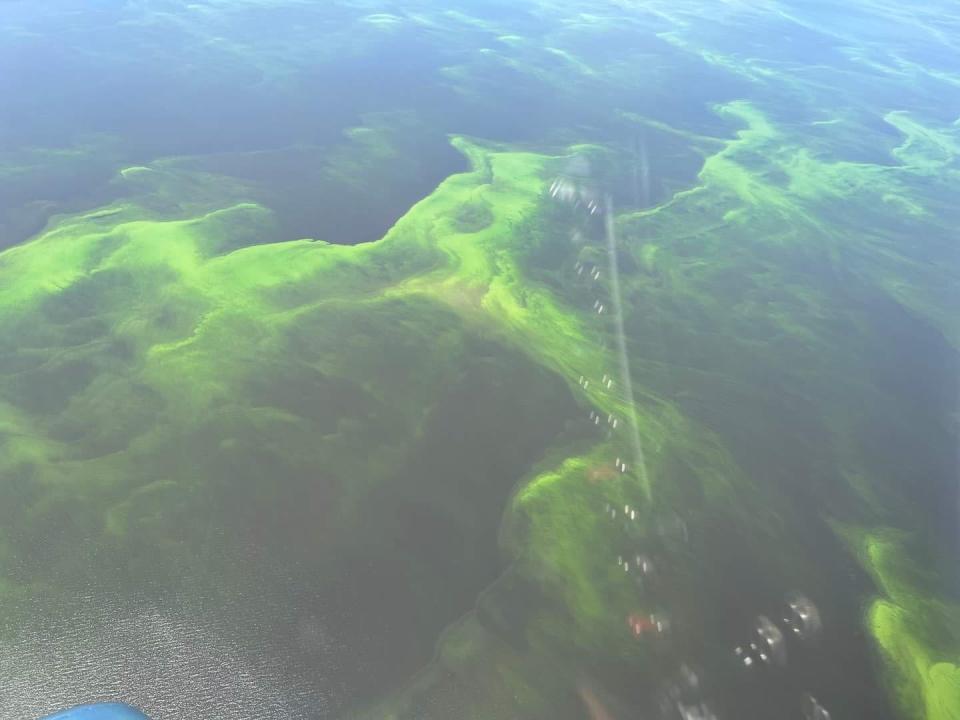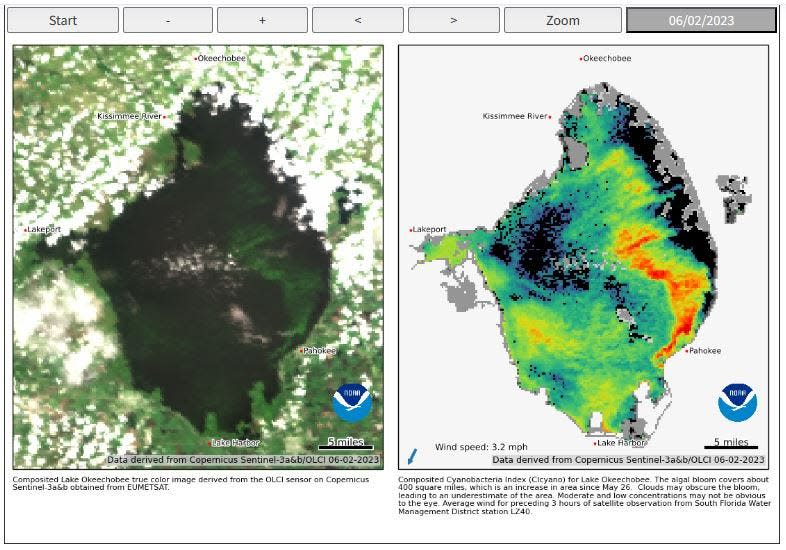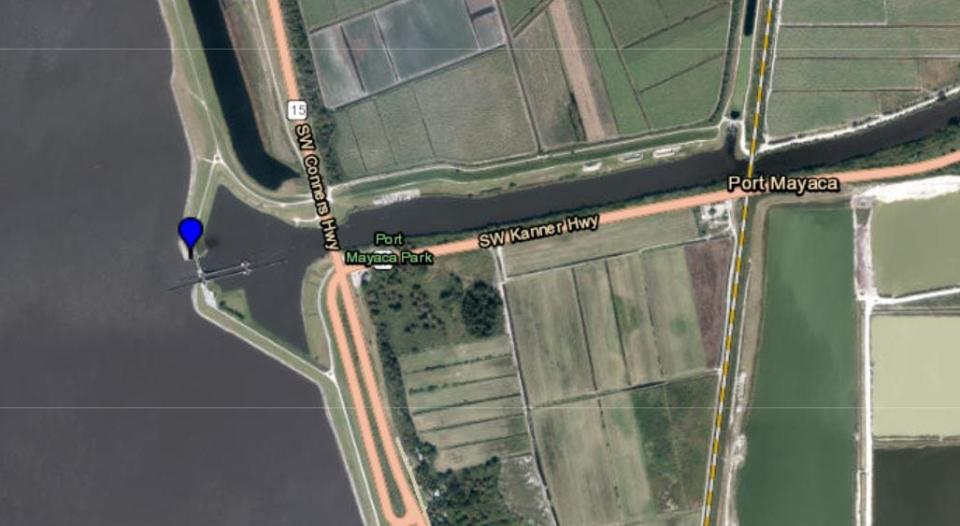DOH Martin County issues toxic algae health alert for Lake Okeechobee, St. Lucie Canal
The public should avoid contact with toxic algae near the east shore of Lake Okeechobee at the recreation area at Port Mayaca and inside the basin just east of the gates, according to a state health alert issued Tuesday.
The cyanobacteria, more commonly called "blue-green algae," contained the toxin microcystin in water samples taken June 17 in four places: on the lake side of the S-308 dam flood gate, on the canal side, in the center of the canal and near the lock.
When open, the gate allows lake water to enter the C-44, also called the St. Lucie Canal, in Martin County, 10 miles west of Indiantown. For one sample inside the flood gate, the concentration was 82 parts per billion, but the species of algae was "pending." For three of the samples, concentrations of the algae are "pending" at this time, according to date from the Florida Dept. of Environmental Protection's algae sampling dashboard.
At 8 parts per billion, the microcystin toxin makes water too hazardous to touch, ingest or inhale for people, pets and wildlife, according to the Environmental Protection Agency.

The toxic algae can flow farther east toward Stuart and the St. Lucie River when the Army Corps of Engineers discharges excess Lake O water through the canal. The agency currently is not discharging water and the gates are closed. As of June 20, 2023, the level of Lake O was at 14 feet 2 inches above sea level.
The agency discharged water from Lake O to the canal for 83 days beginning Jan. 22 and ending April 15 to slowly lower the lake level in preparation of the June 1 start of hurricane season.

The Florida Department of Health office in Martin County advises people to take these precautions:
Do not drink, swim, wade, use personal watercraft, water ski or boat in waters where there is a visible blue-green algae bloom.
Wash your skin and clothing with soap and water if you have contact with algae or water that's discolored or smelly.
Keep pets away from the area. Water containing algae blooms are not safe for animals. Pets and livestock should have a different source of water when algae blooms are present.
Do not cook or clean dishes with water contaminated by algae blooms. Boiling the water will not eliminate the toxins.
Eating fillets from healthy fish caught in freshwater lakes experiencing blooms is safe. Rinse fish fillets with tap or bottled water, throw out the guts and cook fish well.
Do not eat shellfish in waters with algae blooms.

What to do if you see an algal bloom?
Report it to DEP online or via its toll-free hotline at 855-305-3903.
Report fish kills to the Florida Fish and Wildlife Research Institute at 800-636-0511.
Report symptoms from exposure to a harmful algal bloom or any aquatic toxin to the Florida Poison Information Center at 800-222-1222.
Contact your veterinarian if you believe your pet has become ill after consuming or having contact with water containing blue-green algae.
If you have other health questions or concerns about blue-green algae blooms, call the Florida Department of Health in Martin County at 772-221-4000.
For more information on toxic algae blooms
Call the DOH-Martin County office with concerns or questions at 772-221-4000.
Ed Killer writes about the outdoors for TCPalm. Email him at ed.killer@tcpalm.com.
This article originally appeared on Treasure Coast Newspapers: DOH Martin County issues toxic algae health alert for Lake Okeechobee

